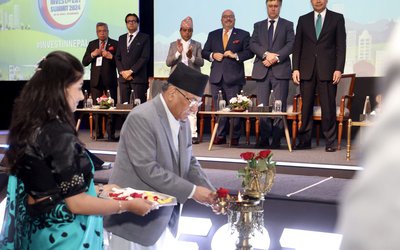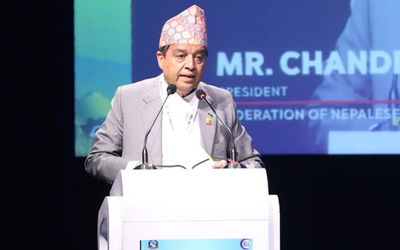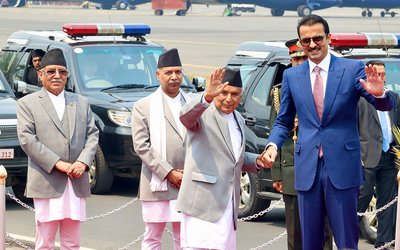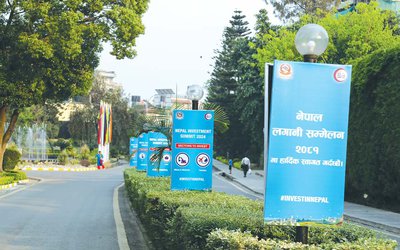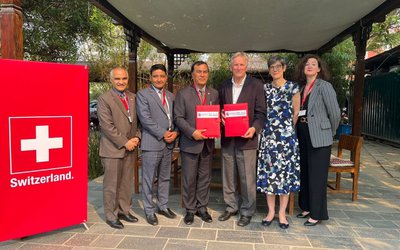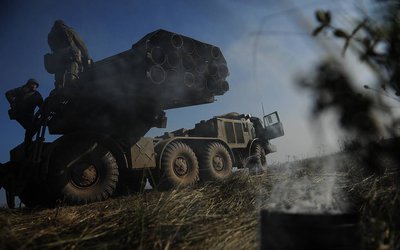The adamancy of Supreme Court on the tenure of CA was repeated one more time when it not only repeated its earlier stance but accused the Prime Minister and his associate Law Minister of ignoring its earlier verdict on the subject. Those understanding the intention of the court that a new constitution is given to the people without wasting too much time and resources, have been appreciative of the verdicts made at different points of time. This recent order of the court put an end to government’s effort to extend the CA term by three more months for which it had moved a bill in the Legislature Assembly. Majority of CA members were happy that the decision would put pressure on top leaders to formulate and get a new constitution adopted by the dead line i.e.27th of May, 2012.This was, however not to happen and something that many of us had not dreamt of happened: the CA died unceremoniously.
It was more or less an open secret that party leaders had differences on three major issues- system of governance, electoral system and state restructuring- of which the last one (restructuring) remained unresolved, despite too much time spent by political leaders and resources expended by the state on their comfort.NC and UML joined hands in opposing the ethnicity-based federalism, propagated by the Maoists, and indicated that multiple identity-based federalism could be acceptable to them. It was rumoured that Maoist chair Prachanda was at times inclined to buy his political rivals’ idea on federalism but was unable to materialize it under pressure from different ethnic groups and the hardliner of his own party. This predicament of his is not difficult to understand if one delves into how Prachanda in the initial period of conflict succeeded in garnering the support of certain ethnic groups to be used against the so called exploiters (Brahmins and Chhetris) and the state. The seed of communal disharmony were sown then, which not only germinated on time but grew into a fruit bearing tree in an environment fertilized by abject poverty and underdevelopment. A retrospective view clearly shows that the Maoists have somewhat succeeded in dividing Nepal along ethnic lines but the matter to be seriously given thought to is whether the cost associated with the act would not far outweigh the benefit flowing from it? To be precise, why would Brahmins and chhetris labeled Aryan Foreigners by the community most pampered by Prachanda all these years would vote for him in a presidential election or his party in a parliamentary election? Why would 20 million Hindus that worship mother cow with reverence on several occasions in a year vote for persons who do not want this pious animal to be declared a national animal?
With people grouped under different banner in different parts of the countries weeks before the final day, situation remained chaotic in Nepal currently experiencing unprecedented trade deficit, alarmingly low capital expenditure and a weakening currency. Nobody seems to be interested in initiating corrective measures to put on track this derailed economy. Indifferent to the injury inflicted by their own act on the economy, people continued to call bandhs one after another, making it very difficult for the low income wage earners to survive. To push the demand for a united Far West, bandh was called, which continued for more than a month, making the life of the impoverished people of that region all the more miserable. Agitators wanting Kailali and Kanchanpur district separated from the region were no less active in bringing the region to a halt. Of the numerous programs organized then, the three-day Nepal bandh called by the Indigenous Nationalities Joint Struggle Committee remained a memorable one in that the strike crippled the nation and was a violent one in which even journalists were thrashed by the unruly agitators. Remorseful of the thrashing in Kathmandu, some senior agitators paid respect to and garlanded a few journalists in Kathmandu on the second day, while journalists elsewhere continued to receive bashing till the last day when it was called off after signing a nine-point agreement with the government. Simultaneous thrashing and garlanding of journalists was the most striking feature of the agitatation said to be called by Prachanda, actively participated in by Hishila Yemi (Maoist leader and PM’s wife) and supported by Baburam-led government. Probably confused by the chaotic situation in the country, the government without proper home work invited the agitating groups on by one and signed with them agreement, promising to fulfill their demand. Signing agreement with two groups carrying mutually exclusive agendas and objectives amply demonstrated lack of seriousness on the part of government. This is how the government created a situation for it to be looked down upon, which also fuelled further unrest in the country.
On the final day CA members were confident that they would not return home disappointed without the meeting taking place as had happened in the preceding days when lawmakers would reach the meeting venue at the ordered time and return home unhappy when informed about meeting postponement. They were optimistic that their leaders would bring some kind of a document for adoption before midnight. The CA members who had gathered at the instructed time of 11am became little bit skeptical after 10pm when different kinds of rumours began to make rounds.Tired,hungry and very unhappy with their leaders, members began to shout slogans against party bosses and wanted the session to commence. Their journey back home started at 11pm when they were told that Prime Minister in a cabinet meeting, attended and strongly supported by ministers belonging to the Madhesi Front, had decided to hold fresh election to CA on 22nd November. Like commoners on the street, members felt deceived by their bosses that night. They feel bad that no leader, not even CA chair, was around to perform the last rites (closing ceremony) of CA that had nurtured and supported 601 children for four odd years. Now that the dissolution of CA and announcement of fresh election is vigorously criticized, political parties have engaged themselves in trading accusations,NC and UML party calling it a conspiracy hatched by the Maoists to capture state power. With President Ram Baran Ydav declaring the current dispensation a caretaker one and opposition parties and a faction of his own party mounting pressure on him to step down to facilitate formation of a consensus government, it seems Bhattari has no choice but to genuinely work along this line. It would be naïve on his part to expect the President to take resort to ordinance, to clear legal hurdles, at a time when the strong faction of his party led by Kiran has decided to cooperate with NC and UML even on the street to oust him. A national unity government empowered with legislative authority can do away with legal hurdles and strengthen the hands of the Election Commission, which has expressed its inability to hold the election until the Interim Constitution and related laws are amended. Alternatively, the resurrection of CA, as is being discussed in some quarters these days, for a short duration could be helpful in carrying out necessary work on the legal front. The resurrected CA could even adopt the new constitution in its current form, leaving the restructuring issue to be resolved by an elected body in days to come. If the perk and benefits of CA members are significantly cut, people would welcome the idea of resurrection because a solution to the current impasse is desperately awaited by the nation. In the present context, therefore, this issue merits serious attention of the concerned and cannot be laughed off as an attempt by some ex CA members to get their job back. The best thing to do after reinstatement of the CA would be to form a small government consisting of nonpolitical people with untarnished image, while politicians concentrate on legal and election related matters. Indeed, Bhattari has no choice but to do everything to achieve alternative-less political consensus, which can get the nation out of the political mess that his government and some leaders have jointly put in.
Dr. Rawal is a former Governor of NRB

Dr. Tilak Rawal
Dr. Rawal is former governor of NRB.
- Prachanda Outsmarts Again
- Apr 14, 2024
- Prachanda Completes One Year
- Jan 26, 2024
- Terrible Times To Continue
- Oct 12, 2023
- Budgets Of Nepal
- Jun 09, 2023
- Moves And Counter Moves
- Feb 27, 2023

